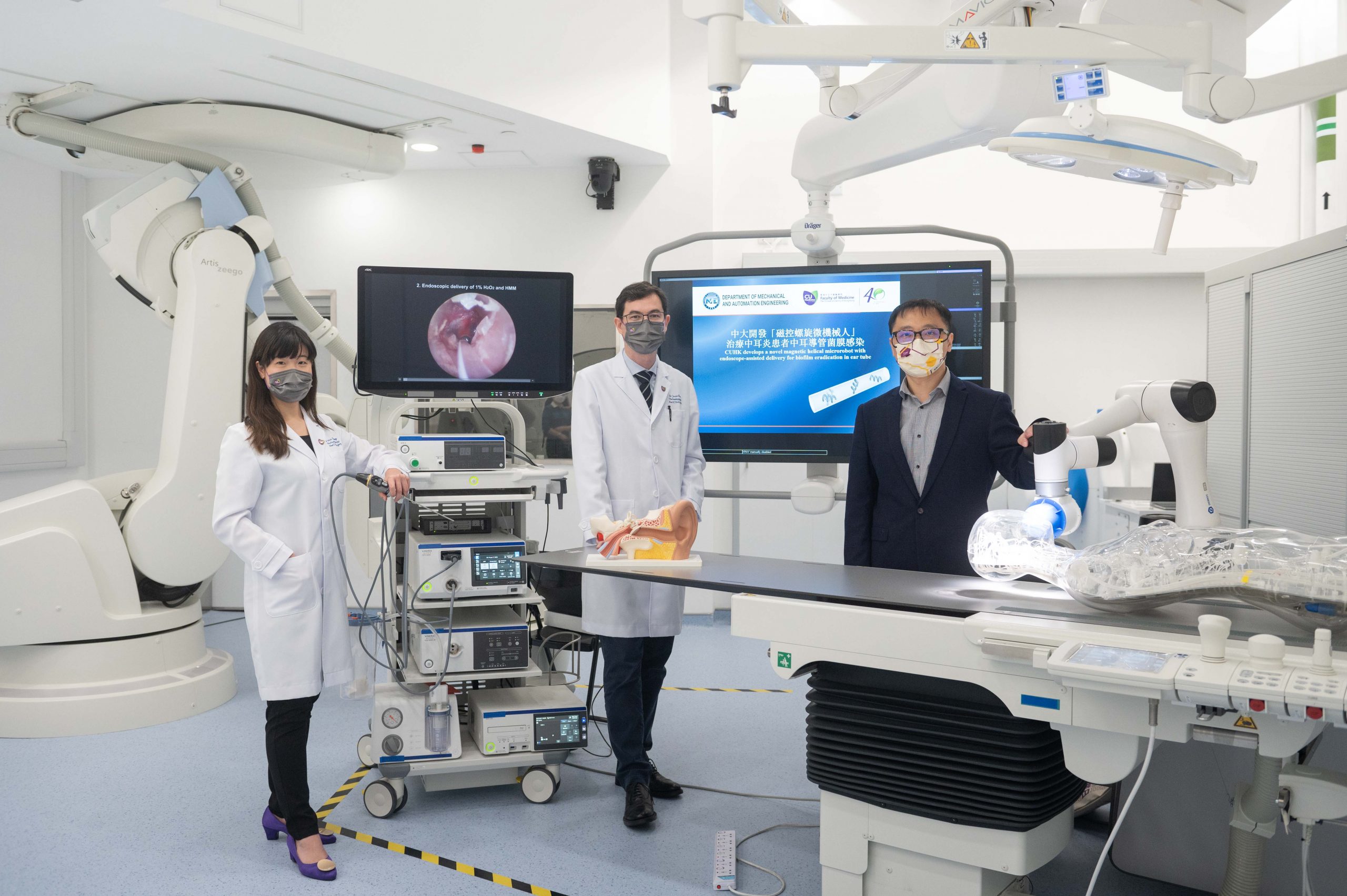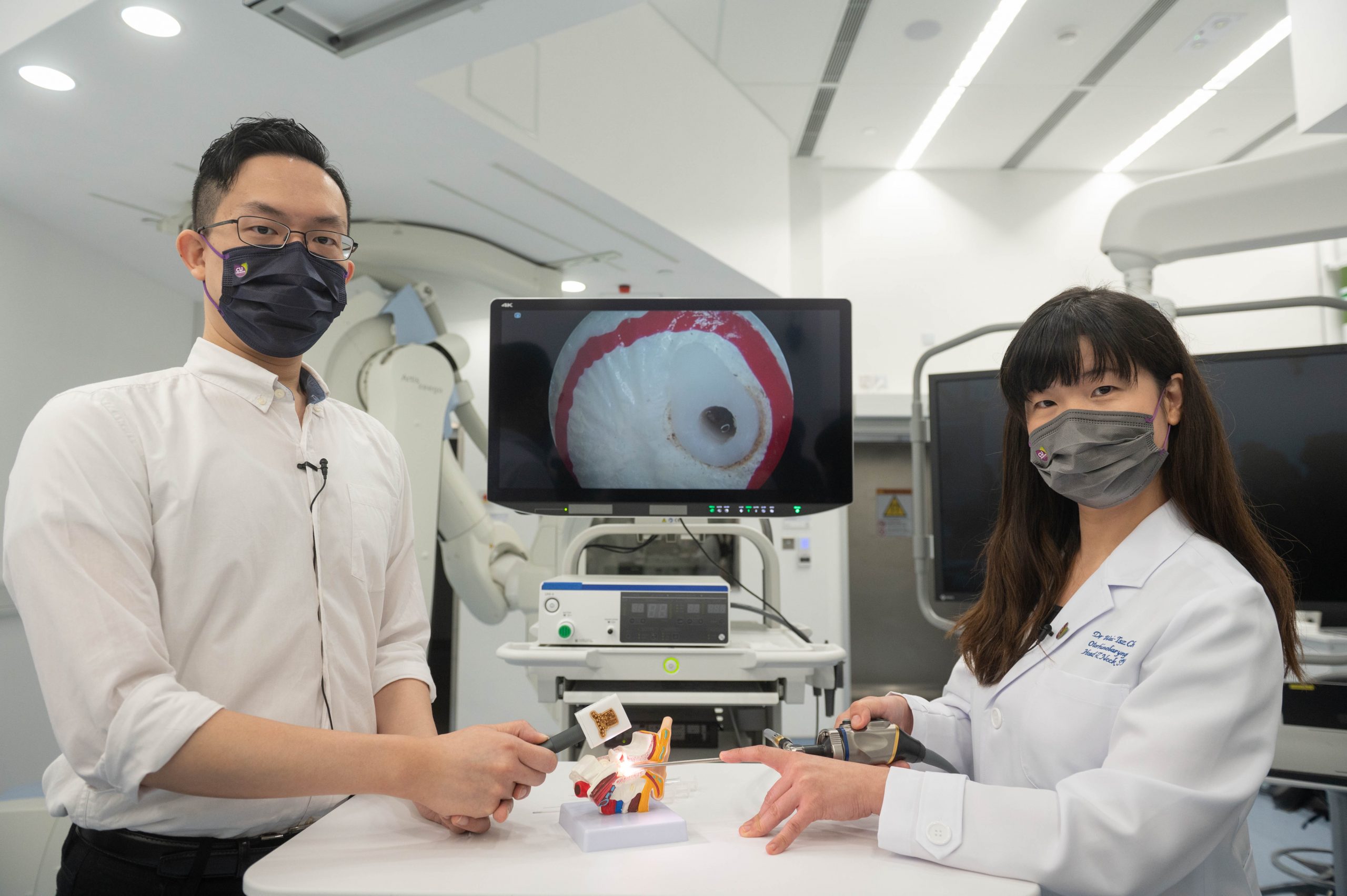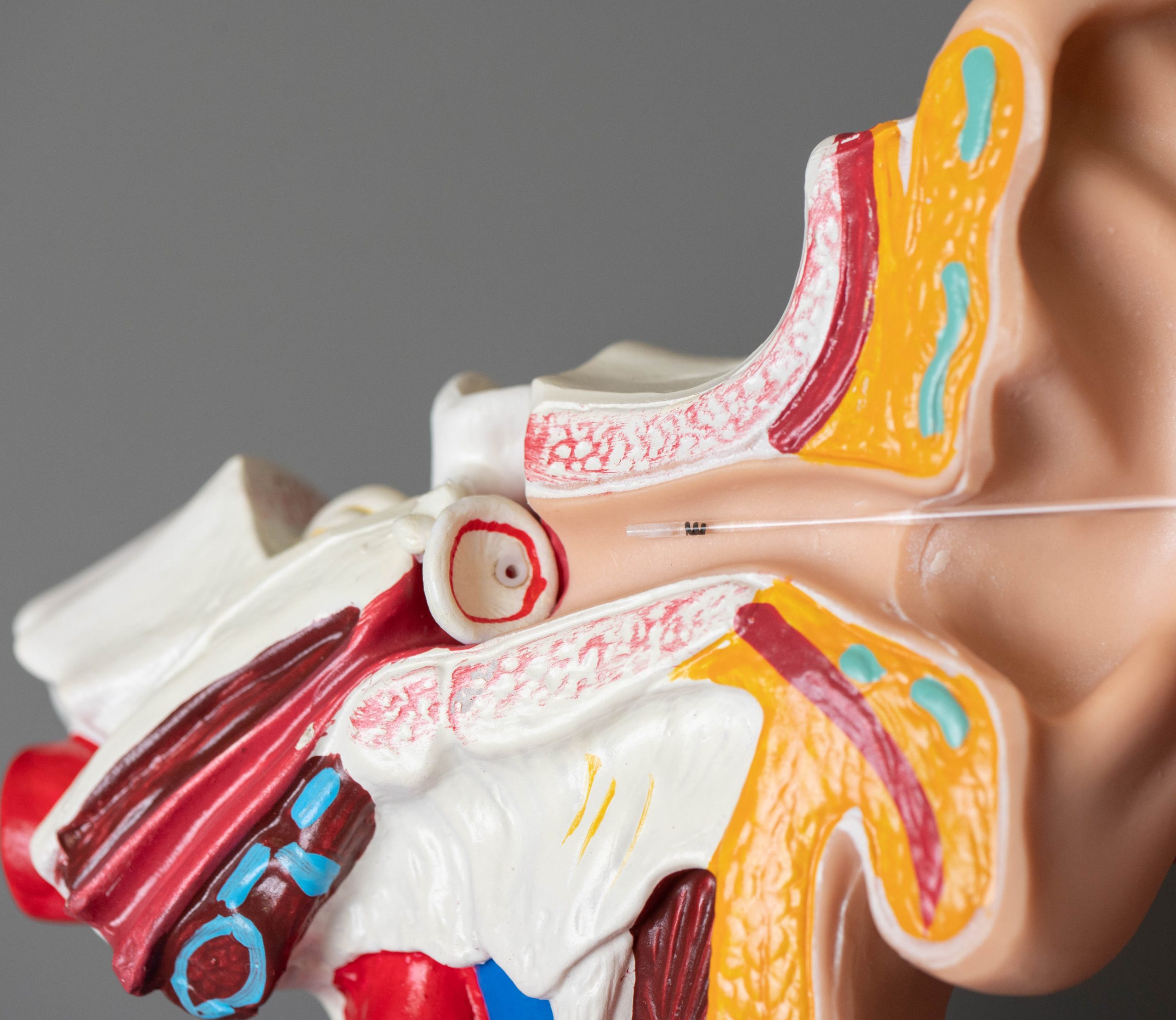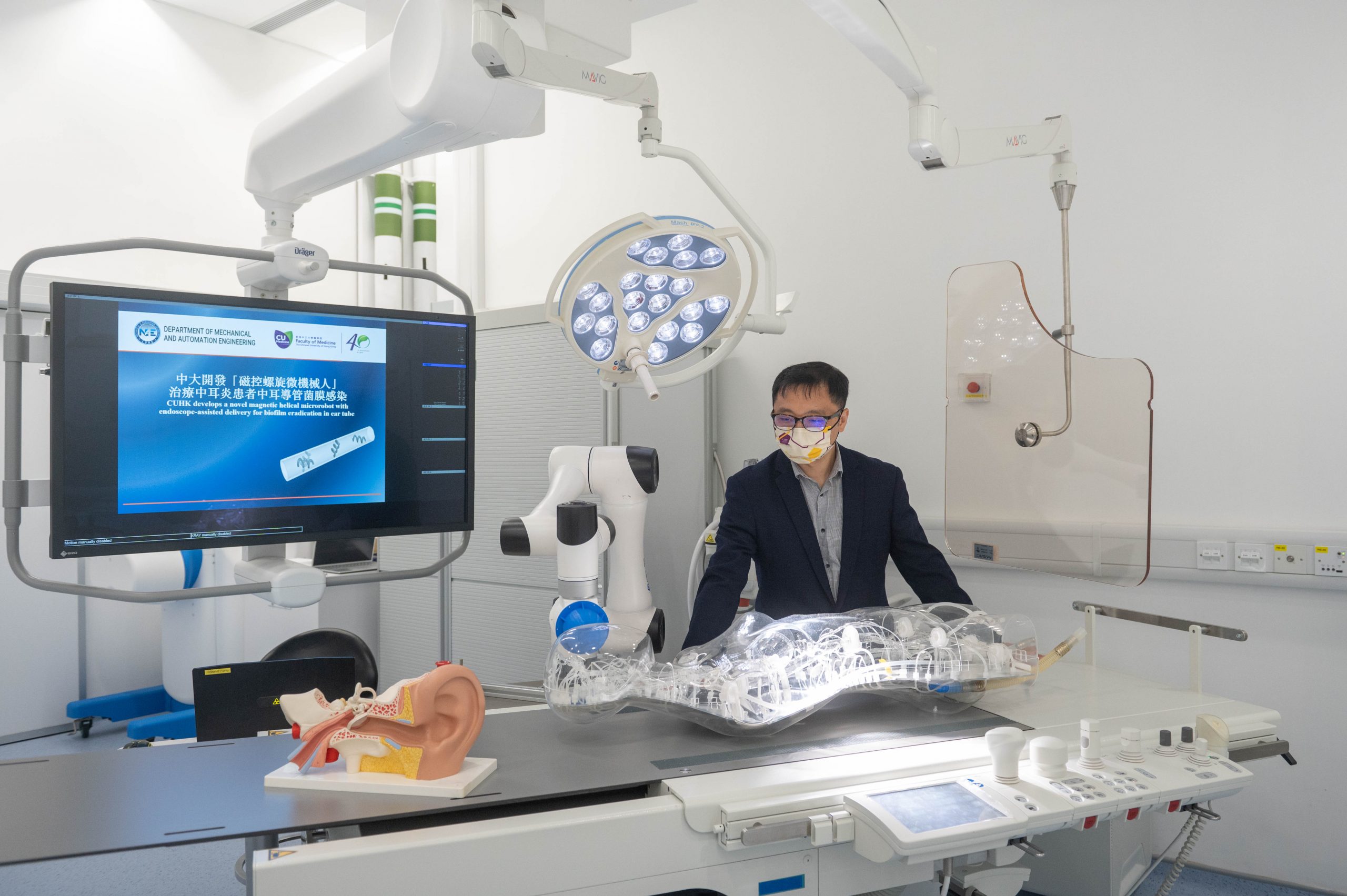Otitis media is an inflammation or infection located in the middle ear. It is a health problem commonly seen in children, usually caused by upper respiratory infections or bacterial infections. Some patients with fluid build-up, or effusion, need to the undergo the surgical procedure of, inserting a tympanostomy tube (also known as an ear tube or T-tube) in the tympanic membrane to drain the middle ear fluid, alleviating the effusion and pressure in the middle ear. However, bacterial biofilm may form in the ear tube over time and contribute to blockages and recurring infections.
Helical microrobots have chemical and mechanical effects in eradicating biofilm
A research team with members from the Department of Mechanical and Automation Engineering at Faculty of Engineering, and the Department of Otorhinolaryngology, Head and Neck Surgery at CU Medicine joined hands to develop a magnetic helical microrobot with endoscope-assisted delivery for biofilm eradication in ear tube. The treatment system consists of helical microrobot, endoscope, magnetic actuation unit with robotic arm, and catheter. Surgeons first use an endoscope to deliver the helical microrobot with a catheter into the ear tube. Then they can remotely actuate the microrobot by the programmed magnetic field in the ear tube to perform biofilm eradication.
Professor Zhang Li said, “During my post-doctoral studies at ETH Zurich in Switzerland, I was inspired by the flagellar movement (the locomotion of the tiny hairline appendages found on many plants) to develop helical microrobot. I further investigated the use of magnetic force for better motion control and applied it in the field of medical science. We learned from our counterparts in medicine about the challenge of treating recurrent infections from biofilm formation in ear tubes. From there, we developed helical microrobot that can promote a catalytic reaction to produce diffusion of reactive oxygen species and kill bacteria cells. So the microrobots have both chemical and mechanical methods of eradicating biofilm. The precision movement of the microrobot enables it to perform tasks harmlessly in a confined space with high accuracy, while inducing no pain.”

CUHK’s cross disciplinary research team developed a magnetic helical microrobot with endoscope-assisted delivery for biofilm eradication in ear tubes.
(From left) Assistant Professor Dr Chang Wai-tsz and Associate Professor Dr Jason Chan from the Department of Otorhinolaryngology, Head and Neck Surgery at CU Medicine; and Professor Zhang Li from the Department of Mechanical and Automation Engineering.

This photo shows the novel system magnetic helical microrobot with endoscope-assisted delivery for biofilm eradication in ear tubes.

This photo shows the novel system magnetic helical microrobot with endoscope-assisted delivery for biofilm eradication in ear tubes.

Professor Zhang Li says biofilm has been known for quite some time. Research team will continue to explore the application of this novel system in other medical devices or implants placed in the human body where biofilm infections can occur.
CUHK Press Release: Click here!